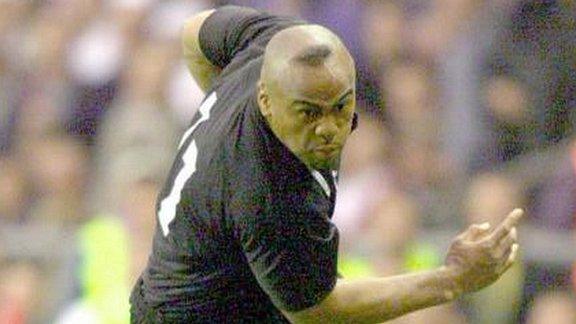Jonah Lomu: the World Cup that created a legend
- Published

Lomu was seen as the sport's first global star
One of the great joys of covering rugby around the globe was the sight of Jonah Lomu charging through the 1995 World Cup.
The high veld and coastal landscapes of South Africa were the venues for the emergence of this rugby superstar whose exploits persuaded media baron Rupert Murdoch that he must galvanise the sport into a fully professional code.
Get me that man, Murdoch told his henchmen, no excuses, no maybes. Sign Jonah and we have the jewel we need to lead this rugby revolution.
A year before, on test debut as the youngest in All Black history, Lomu was uncertain in two tests against France, but that was gone in Johannesburg through Bloemfontein to Pretoria then Cape Town.
His transformation was remarkable. The gauche teenager was replaced by a thundering keg of explosive venom on the All Blacks left wing.
In a rugby land which lauded size and power, Lomu came with super-sized quantities of both, topped with deft ball-handling skills, superb balance and a sense of timing which astounded his opponents and those of us fortunate to cover that extraordinary tournament.
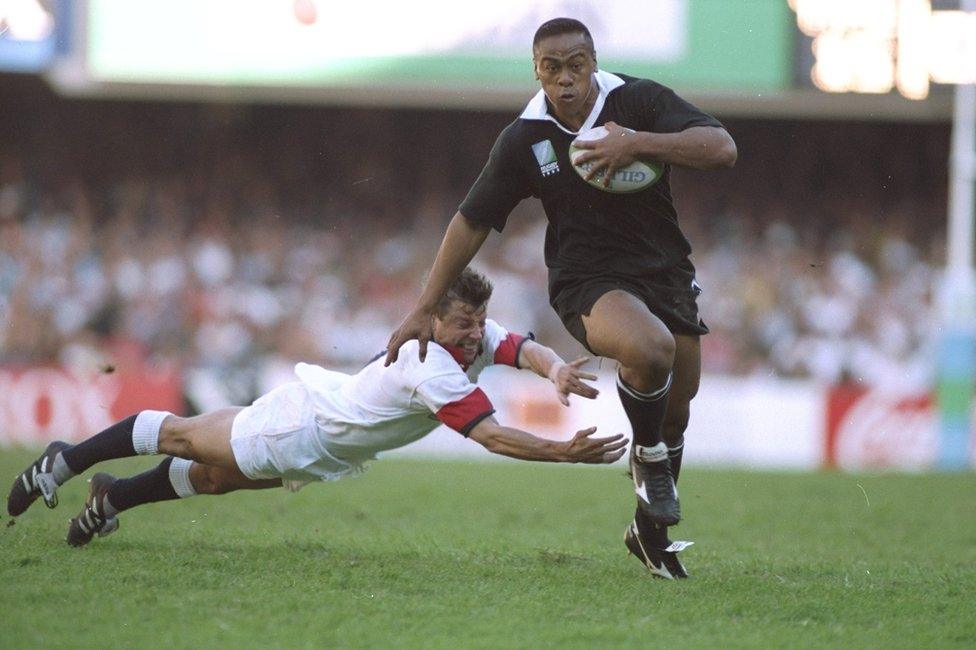
Lomu was part of the team that won the semi-final against England
When All Black coach Laurie Mains picked Lomu in 1994, the shy wing never quite got to grips with his job description.
But after a punishing fitness schedule and massive encouragement from people like Eric Rush to stick with rugby and fend away offers from rival codes, Lomu was picked for the World Cup.
Frenzied hordes of fans
We wondered about his influence but did not have to wait long as Lomu smashed into his work with two tries in the opening test with Ireland.
His impact spread quickly, but only a few knew he was playing with the debilitating effects of kidney nephritis.
"I went to the World Cup in '95 knowing I was sick," Lomu later revealed.
Jonah Lomu, considered one of New Zealand's finest rugby union players of all time, has died at the age of 40.
While the All Blacks were feted in their usual way at Johannesburg Airport at the start of the tournament, there was no special crowd focus on Lomu.
He was a strapping young wing with two mediocre tests on his CV while Sean Fitzpatrick, Richard Loe and Zinzan Brooke were the team legends.
They lost that status very quickly while Lomu was assigned his personal bodyguard as his presence at any shopping centre or tourist haunt was a magnet for frenzied hordes.
In a few weeks Lomu turned his potential into pure destruction, and the mixed-race, known as coloured, and black populations in South Africa had a new superhero they could barrack for, and taunt those who had restricted much of their lives.
When Lomu returned home that interest rose even more - he was rugby's first superstar.
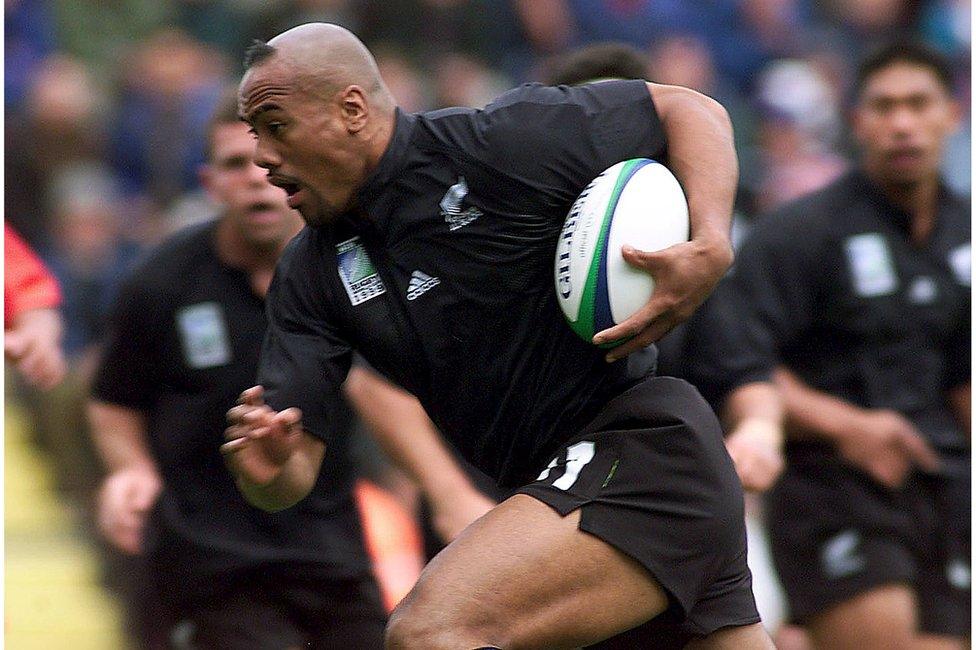
Lomu was known for his deft ball-handling skills, superb balance and a sense of timing
His time was not his own. He had his public and private troubles, but he was growing up in the nation's spotlight.
Watching him play rugby was a special occasion. He was phenomenal for the Auckland Blues, and many times in Australia, like in late 1995, he made a mess of their very strong defence.
He ran through, around or over those who lost their tackling technique, and then in 2000 he tiptoed down the sideline for a last-minute try to win a test in Sydney.
That was 15 years ago, when his kidney problems were causing him a lot more issues before he finished his 63rd and final test against Wales in Cardiff in 2002.
Lomu had his kidney transplant, but that was failing him as he struggled through the opening ceremony at the 2011 World Cup.
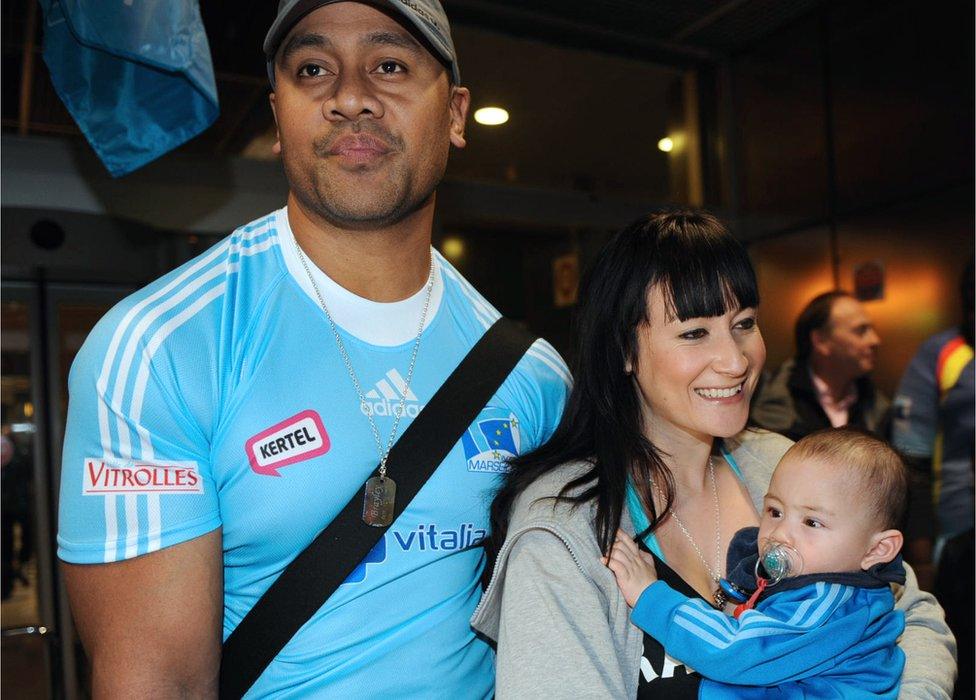
Lomu moved to France in 2009 after signing for French team Marseille Vitrolles
He regrouped and, with his wife Nadene and two young boys, was an ambassador at this year's event. Before he left, he toured the country in speaking engagements with Brian Lochore, Graham Henry and Stephen Donald.
He looked well and was chirpy. He was managing the multiple weekly visits for kidney dialysis and that was sorted for his lengthy trip to the World Cup.
He, like thousands of Kiwi travellers, was confident the All Blacks would return as winners.
They were - and so was Lomu, whose untimely death today at 40 will be an enduring shock for the sport and his global friends.
- Attribution
- Published18 November 2015

- Published18 November 2015
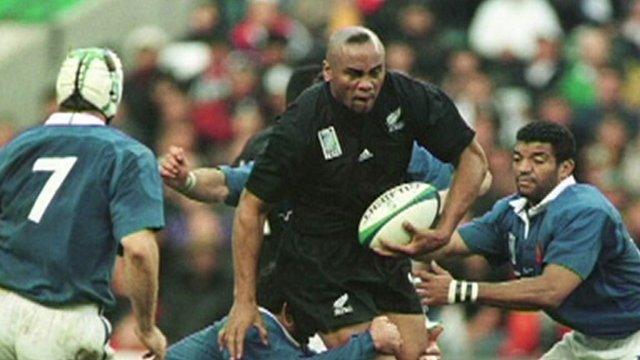
- Published18 November 2015
